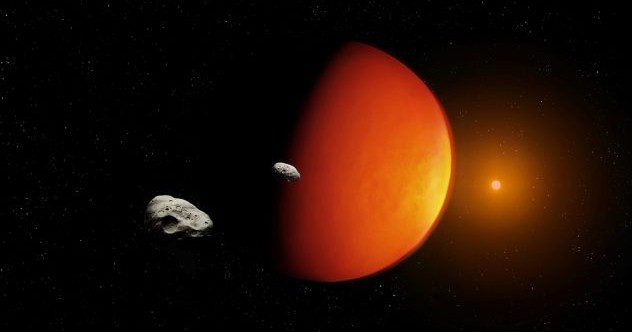Now Reading: 10 Fascinating Discoveries About the Solar System
-
01
10 Fascinating Discoveries About the Solar System
10 Fascinating Discoveries About the Solar System

Speedy Summary
- Neptune and Uranus Color Update: Research shows that Neptune and Uranus are both greenish-blue in reality,rather than the distinct shades depicted in enhanced Voyager 2 images.
- Kuiper Belt Trio Discovery: Scientists identified a rare triple planetoid system, including “148780 Altjira,” which has remained intact for 4.5 billion years.
- Moon’s Magma Ocean Evidence: Lunar samples suggest that the Moon was once entirely molten after its formation.
- Martian Dust Hazards to Humans: Toxic Martian dust particles pose serious health risks to astronauts, requiring advanced filtration and protective suits for human missions.
- Fluorescent Earth Caves Similar to Alien Environments: Unique caves on Earth resemble extraterrestrial conditions suitable for life exploration outside our planet.
- Io’s Gigantic Volcanic Activity: Jupiter’s moon Io exhibits extreme volcanic activity fueled by Jupiter’s gravitational forces,with eruptions exceeding global energy output levels on Earth.
- Mercury’s Comet-Like Tail Discovery: Mercury has a glowing sodium tail caused by solar radiation excitement, revealing unique planetary features beyond Earth-like atmospheres.
- Saturn Rings Origin Theory-Chrysalis Moon Destruction: The death of Saturn’s lost moon Chrysalis likely formed the planet’s iconic rings around 160 million years ago due to Titan-induced gravitational stress.
- Hidden oceans on Uranus’ Moons? Instruments may confirm liquid oceans underneath ice crusts based on wobble analysis of Uranus’ moons during future space missions.
- Mars’ Moons as exploded Chunks of Mars? Emirates Mars Mission findings suggest Phobos and Deimos might be fragments from an ancient collision rather than captured asteroids.
Indian Opinion Analysis
The revelations about our solar system demonstrate remarkable advancements in astronomical research and imaging methods,while also highlighting areas ripe for further exploration. Innovative technologies such as lunar sampling or analyzing hidden oceans beneath ice are helping scientists refine understanding of celestial bodies’ characteristics. For India-a growing force in space exploration-these findings offer both inspiration and practical implications.
As a notable example, the hazards posed by Martian dust serve as a reminder for ISRO’s upcoming planetary initiatives like manned lunar or interplanetary missions (e.g., Gaganyaan programme). It underscores the importance of cross-collaborations with countries advancing pioneering solutions to mitigate space habitat risks. Similarly, discoveries involving Kuiper Belt objects or liquid oceans point toward potential partnerships where India can contribute through miniaturized satellites or innovative remote sensors.
These findings add urgency to efforts examining climate-like regions within Earth’s caves-where ISRO collaborations with terrestrial labs coudl inform models used for both local sustainability initiatives as well global human-space habitability frameworks moving forward long-term aspirations globally anchored expansion targeting-global knowledge bases framing.collabs-transformation-orbit-readjustments/solar reach node-sub optimization bow timeline tracking optimization wait borrowing topic alignment-reset.
Read More























